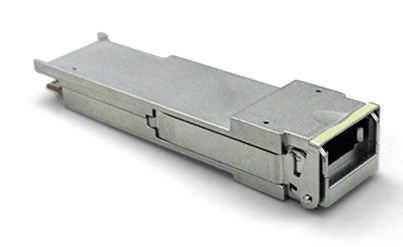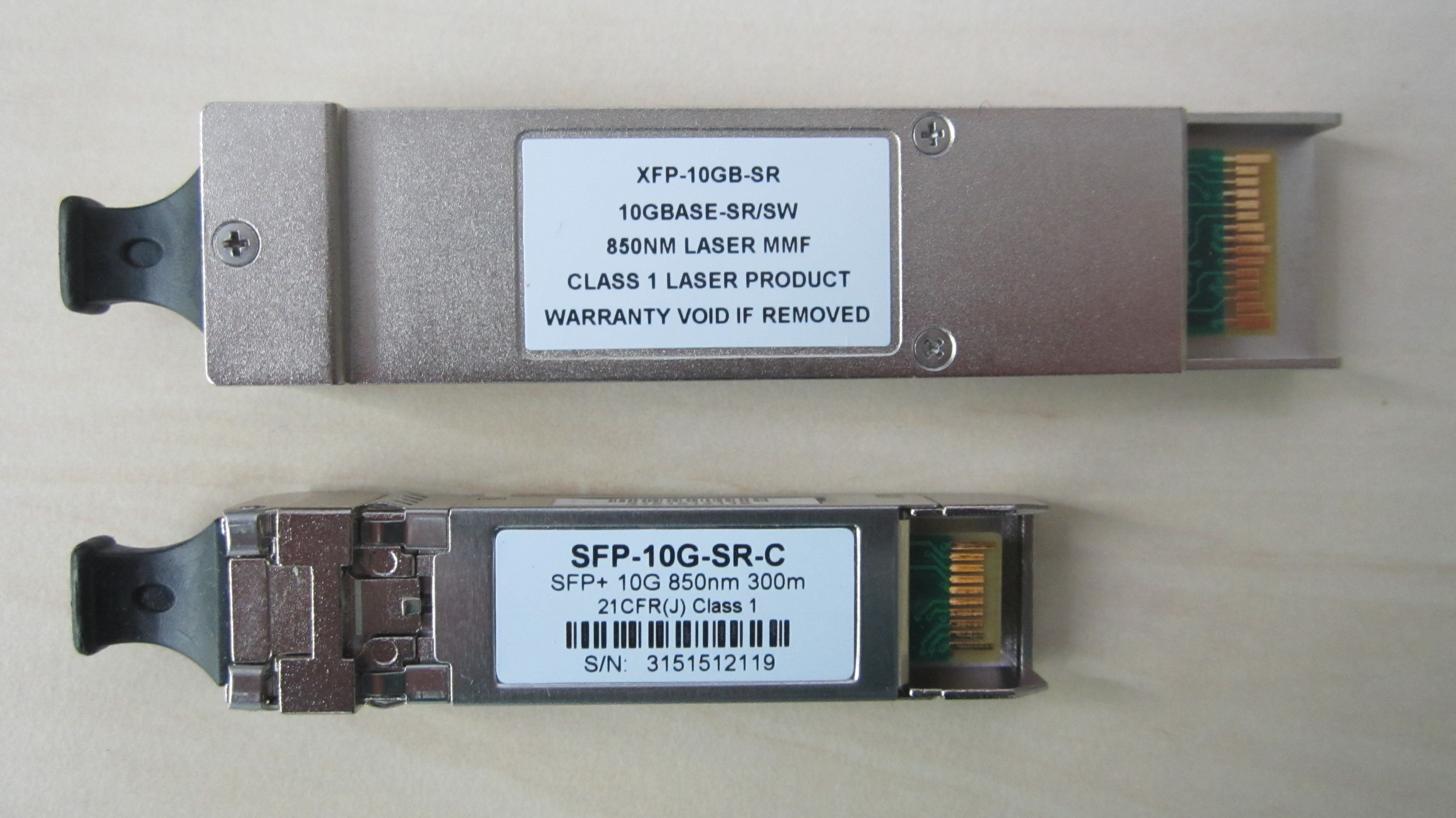|
Twinaxial
Twinaxial cabling, or "Twinax", is a type of cable similar to coaxial cable, but with two inner conductors instead of one. Due to cost efficiency it is becoming common in modern (2013) very-short-range high-speed differential signaling applications. Legacy applications IBM Historically, Twinax was the cable specified for the IBM 5250 terminals and printers, used with IBM's System/34, System/36, System/38, and IBM AS/400 midrange hosts, and with IBM Power Systems machines running IBM i. The data transmission is half-duplex, balanced transmission, at 1 Mbit/s, on a single shielded, 110 Ω twisted pair. With Twinax seven devices can be addressed, from workstation address 0 to 6. The devices do not have to be sequential. Twinax is a bus topology that requires termination to function properly. Most Twinax T-connectors have an automatic termination feature. For use in buildings wired with Category 3 or higher twisted pair there are baluns that convert Twinax to twisted pair and ... [...More Info...] [...Related Items...] OR: [Wikipedia] [Google] [Baidu] |
100 Gbit Ethernet
40 Gigabit Ethernet (40GbE) and 100 Gigabit Ethernet (100GbE) are groups of computer networking technologies for transmitting Ethernet frames at rates of 40 and 100 gigabits per second (Gbit/s), respectively. These technologies offer significantly higher speeds than 10 Gigabit Ethernet. The technology was first defined by the IEEE 802.3ba-2010 standard and later by the 802.3bg-2011, 802.3bj-2014, 802.3bm-2015, and 802.3cd-2018 standards. The standards define numerous port types with different optical and electrical interfaces and different numbers of optical fiber strands per port. Short distances (e.g. 7 m) over twinaxial cable are supported while standards for fiber reach up to 80 km. Standards development On July 18, 2006, a call for interest for a High Speed Study Group (HSSG) to investigate new standards for high speed Ethernet was held at the IEEE 802.3 plenary meeting in San Diego. The first 802.3 HSSG study group meeting was held in September 2006. In June 20 ... [...More Info...] [...Related Items...] OR: [Wikipedia] [Google] [Baidu] |
10 Gigabit Ethernet
10 Gigabit Ethernet (10GE, 10GbE, or 10 GigE) is a group of computer networking technologies for transmitting Ethernet frames at a rate of 10 gigabits per second. It was first defined by the IEEE 802.3ae-2002 standard. Unlike previous Ethernet standards, 10 Gigabit Ethernet defines only full-duplex point-to-point links which are generally connected by network switches; shared-medium CSMA/CD operation has not been carried over from the previous generations Ethernet standards so half-duplex operation and repeater hubs do not exist in 10GbE. The 10 Gigabit Ethernet standard encompasses a number of different physical layer (PHY) standards. A networking device, such as a switch or a network interface controller may have different PHY types through pluggable PHY modules, such as those based on SFP+. Like previous versions of Ethernet, 10GbE can use either copper or fiber cabling. Maximum distance over copper cable is 100 meters but because of its bandwidth requirements, higher ... [...More Info...] [...Related Items...] OR: [Wikipedia] [Google] [Baidu] |
Twinax Stecker
Twinaxial cabling, or "Twinax", is a type of cable similar to coaxial cable, but with two inner conductors instead of one. Due to cost efficiency it is becoming common in modern (2013) very-short-range high-speed differential signaling applications. Legacy applications IBM Historically, Twinax was the cable specified for the IBM 5250 terminals and printers, used with IBM's System/34, System/36, System/38, and IBM AS/400 midrange hosts, and with IBM Power Systems machines running IBM i. The data transmission is half-duplex, balanced transmission, at 1 Mbit/s, on a single shielded, 110 Ω twisted pair. With Twinax seven devices can be addressed, from workstation address 0 to 6. The devices do not have to be sequential. Twinax is a bus topology that requires termination to function properly. Most Twinax T-connectors have an automatic termination feature. For use in buildings wired with Category 3 or higher twisted pair there are baluns that convert Twinax to twisted pair and hubs ... [...More Info...] [...Related Items...] OR: [Wikipedia] [Google] [Baidu] |
IBM I
IBM i (the ''i'' standing for ''integrated'') is an operating system developed by IBM for IBM Power Systems. It was originally released in 1988 as OS/400, as the sole operating system of the IBM AS/400 line of systems. It was renamed to i5/OS in 2004, before being renamed a second time to IBM i in 2008. It is an evolution of the System/38 CPF operating system, with compatibility layers for System/36 SSP and AIX applications. It inherits a number of distinctive features from the System/38 platform, including the Machine Interface, the implementation of object-based addressing on top of a single-level store, and the tight integration of a relational database into the operating system. History Origin OS/400 was developed alongside the AS/400 hardware platform beginning in December 1985. Development began in the aftermath of the failure of the Fort Knox project, which left IBM without a competitive midrange system. During the Fort Knox project, a skunkworks project was started ... [...More Info...] [...Related Items...] OR: [Wikipedia] [Google] [Baidu] |
SFP+
Small Form-factor Pluggable connected to a pair of fiber-optic cables Small Form-factor Pluggable (SFP) is a compact, hot-pluggable network interface module format used for both telecommunication and data communications applications. An SFP interface on networking hardware is a modular slot for a media-specific transceiver, such as for a fiber-optic cable or a copper cable. The advantage of using SFPs compared to fixed interfaces (e.g. modular connectors in Ethernet switches) is that individual ports can be equipped with different types of transceiver as required. The form factor and electrical interface are specified by a multi-source agreement (MSA) under the auspices of the Small Form Factor Committee. The SFP replaced the larger gigabit interface converter (GBIC) in most applications, and has been referred to as a Mini-GBIC by some vendors. SFP transceivers exist supporting synchronous optical networking (SONET), Gigabit Ethernet, Fibre Channel, PON, and other communi ... [...More Info...] [...Related Items...] OR: [Wikipedia] [Google] [Baidu] |
Coaxial Cable
Coaxial cable, or coax (pronounced ) is a type of electrical cable consisting of an inner conductor surrounded by a concentric conducting shield, with the two separated by a dielectric ( insulating material); many coaxial cables also have a protective outer sheath or jacket. The term ''coaxial'' refers to the inner conductor and the outer shield sharing a geometric axis. Coaxial cable is a type of transmission line, used to carry high-frequency electrical signals with low losses. It is used in such applications as telephone trunk lines, broadband internet networking cables, high-speed computer data busses, cable television signals, and connecting radio transmitters and receivers to their antennas. It differs from other shielded cables because the dimensions of the cable and connectors are controlled to give a precise, constant conductor spacing, which is needed for it to function efficiently as a transmission line. Coaxial cable was used in the first (1858) and followin ... [...More Info...] [...Related Items...] OR: [Wikipedia] [Google] [Baidu] |
DisplayPort
DisplayPort (DP) is a digital display interface developed by a consortium of PC and chip manufacturers and standardized by the Video Electronics Standards Association (VESA). It is primarily used to connect a video source to a display device such as a computer monitor A computer monitor is an output device that displays information in pictorial or textual form. A discrete monitor comprises a visual display, support electronics, power supply, housing, electrical connectors, and external user controls. The di .... It can also carry audio signal, audio, USB, and other forms of data. DisplayPort was designed to replace VGA connector, VGA, FPD-Link, and Digital Visual Interface (DVI). It is backward compatibility, backward compatible with other interfaces, such as HDMI and DVI, through the use of either active or passive adapters. It is the first display interface to rely on packetized data transmission, a form of digital communication found in technologies such as Ethernet, U ... [...More Info...] [...Related Items...] OR: [Wikipedia] [Google] [Baidu] |
SATA 3
SATA (Serial AT Attachment) is a computer bus interface that connects host bus adapters to mass storage devices such as hard disk drives, optical drives, and solid-state drives. Serial ATA succeeded the earlier Parallel ATA (PATA) standard to become the predominant interface for storage devices. Serial ATA industry compatibility specifications originate from the Serial ATA International Organization (SATA-IO) which are then promulgated by the INCITS Technical Committee T13, AT Attachment (INCITS T13). History SATA was announced in 2000 in order to provide several advantages over the earlier PATA interface such as reduced cable size and cost (seven conductors instead of 40 or 80), native hot swapping, faster data transfer through higher signaling rates, and more efficient transfer through an (optional) I/O queuing protocol. Revision 1.0 of the specification was released in January 2003. Serial ATA industry compatibility specifications originate from the Serial ATA Internatio ... [...More Info...] [...Related Items...] OR: [Wikipedia] [Google] [Baidu] |
Bend Radius
Bend radius, which is measured to the inside curvature, is the minimum radius one can bend a pipe, tube, sheet, cable or hose without kinking it, damaging it, or shortening its life. The ''smaller'' the bend radius, the ''greater'' the material flexibility (as the radius of curvature ''decreases'', the curvature ''increases''). The diagram to the right illustrates a cable with a seven-centimeter bend radius. The ''minimum bend radius'' is the radius below which an object such as a cable should not be bent. Fiber optics The minimum bend radius is of particular importance in the handling of fiber-optic cables, which are often used in telecommunications. The minimum bending radius will vary with different cable designs. The manufacturer should specify the minimum radius to which the cable may safely be bent during installation, and for the long term. The former is somewhat larger than the latter. The minimum bend radius is in general also a function of tensile stresses, ''e.g.,'' ... [...More Info...] [...Related Items...] OR: [Wikipedia] [Google] [Baidu] |
Bit Error Ratio
In digital transmission, the number of bit errors is the number of received bits of a data stream over a communication channel that have been altered due to noise, interference, distortion or bit synchronization errors. The bit error rate (BER) is the number of bit errors per unit time. The bit error ratio (also BER) is the number of bit errors divided by the total number of transferred bits during a studied time interval. Bit error ratio is a unitless performance measure, often expressed as a percentage. The bit error probability ''pe'' is the expected value of the bit error ratio. The bit error ratio can be considered as an approximate estimate of the bit error probability. This estimate is accurate for a long time interval and a high number of bit errors. Example As an example, assume this transmitted bit sequence: 1 1 0 0 0 1 0 1 1 and the following received bit sequence: 0 1 0 1 0 1 0 0 1, The number of bit errors (the underlined bits) is, in this case, 3. The BER is 3 ... [...More Info...] [...Related Items...] OR: [Wikipedia] [Google] [Baidu] |






